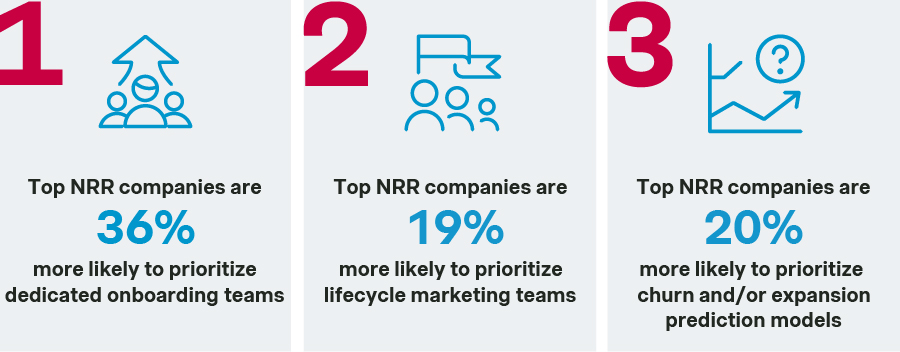Growth expectations are increasing, but AI disruption and buyer skepticism create a challenging reality. Our Simon-Kucher Global Software Study 2025 uncovers the critical disconnect between how software is sold, how it's bought - and how to bridge this gap.
Let’s be honest. For most software leaders, 2025 feels like a paradox. On one side, there’s persistent optimism – budgets are growing, and artificial intelligence (AI) seems to offer plenty of opportunities for growth. On the other side, there’s the reality of skeptical software buyers, complex sales cycles, and a persistent feeling that the old go-to-market playbook is broken.
So, where’s the disconnect?
To find out, we explored a dual-perspective approach for our 2025 Global Software Study: Surveying both sides of the market. We gathered insights from over 500 software executives and more than 160 B2B software buyers to create a comprehensive overview of the industry.
The results reveal a series of startling gaps between how software is sold and how it’s actually bought. Here’s what you need to know about the latest software trends.
The View from the C-Suite: Countering the AI anxiety
From the executive suite, the outlook is a mix of ambition and anxiety. Leaders are chasing growth but also fearing disruption. Many struggle to adapt their commercial models fast enough to the latest AI trends.
“We're growing, but are we becoming obsolete?”
There is a lot of confidence in the overall market metrics: a full 88% of software executives expect their revenue to hold stable or grow in 2025, driven primarily by organic growth levers like customer acquisition, retention, and pricing.
But beneath the surface, there's a deep-seated anxiety about AI. For mid- to large-sized companies, AI disruption and the potential loss of product-market fit have turned into a serious concern – outpacing traditional growth challenges.
Companies in different regions are using different strategies to cope with this challenge: while North American executives are betting heavily on developing new AI products, their European and APAC counterparts are more focused on leveraging AI to scale internal processes efficiently.
The unspoken fear is universal, and many companies wonder: “Are our current strategies agile enough to survive the next wave of AI innovation?”
24% of respondents expect revenue growth in 2025 to be higher vs. growth in 2024. 12% expect lower and 64% expect the same.
Pressure increasing: Are team sizes shrinking or are organizations evolving?
The response to this overall market pressure isn't to shrink the commercial organization but to radically reshape it. While 47% of companies expect headcount to remain unchanged, they foresee major internal role reallocations. Our survey shows a clear U-turn from transactional roles toward more consultative engagement – reinforcing a trend we’ve observed for years. On a closer look, inside sales teams are being scaled down, while investment is pouring into field sales and AI augmentation roles to drive complex, high-value deals.
This strategic shift from volume to value is also reflected in the key metrics leaders are prioritizing.
The value paradox: The NRR focus vs. the incentive gap
In the current market environment, Net Revenue Retention (NRR) is the north star. Executives are clear on what drives it: 44% agree that early-stage value delivery, like onboarding and lifecycle management, is the most effective lever.
The top-performing companies – those with an NRR of over 130% - are already acting on this insight. They are 36% more likely to prioritize dedicated onboarding teams, 19% more likely to focus on lifecycle marketing, and 20% more likely to use predictive models to get ahead of customer churn
Yet, this focus on long-term value reveals a critical disconnect in how most companies operate. While it’s clear that multiple teams contribute to a healthy NRR, the incentive structures haven't caught up. While customer success teams are increasingly responsible for revenue-critical tasks like renewals and upsells, their incentives don't reflect it. Also, marketing teams building the lead funnel, product teams delivering customer value, and pricing teams defining the revenue model all have a major impact, but they are often overlooked.

Instead, it’s primarily sales teams that are compensated for direct revenue growth. This gap means many of the teams responsible for delivering long-term value are not being rewarded for it, creating a major vulnerability in any company’s growth engine.
While companies are re-evaluating their growth strategy, they are simultaneously grappling with the biggest external trend: artificial intelligence. But here too, the gap between ambition and reality is stark.
A fading hype or just the beginning? Solving the AI monetization hangover
While AI adoption is still a top priority for most companies, the financial results have been underwhelming, signaling an "AI monetization hangover." A full 76% of software companies have launched AI features, but few have cracked the code for high-impact monetization.
This disconnect stems from a shift away from the initial AI hype toward more realistic long-term expectations. While two-thirds of companies achieved their AI financial targets, most set very modest goals – often just a 0-10% revenue uplift. These actual targets were much lower than the average revenue growth of 15-20% that executives expected in our Simon-Kucher Global Software Study two years ago.
Adding to the challenge, monetization strategies themselves remain fragmented, with 45% of companies using two or more models, often a mix of premium plan bundling, seat-based add-ons, and usage-based pricing. This lack of a clear playbook here becomes even more critical considering that a staggering 96% of companies plan to launch new AI features in the next 24 months – raising the stakes substantially for finding a monetization model that works.
The AI paradox: High demand and crippling adoption hurdles
But the challenge with AI isn't just on the vendor's side. While software leaders are struggling to solve the monetization puzzle, buyers are facing an entirely different set of hurdles, creating a second AI paradox.
The demand for AI is not just hype; in 2025, it’s real. 74% of buyers plan to adopt new AI solutions in the next two years, and the vast majority prefer to buy from third-party vendors rather than build in-house.
However, there’s a massive gap between intent and adoption. The biggest barriers holding buyers back are not cost or availability, but usability. "Difficulty of use" (31%) and "lack of clear business impact" (31%) were the top concerns in the study.
This sends a crucial message to every vendor involved in developing software: your AI strategy cannot end with code development. Without a robust customer adoption strategy – that includes a dedicated customer success strategy, a detailed pricing strategy, and concrete sales enablement – even the most advanced AI features will fail to gain traction with your potential customer base.
Overall, this highlights a dual challenge for vendors: a sound AI monetization strategy is critical, but it will only succeed if paired with an equally robust adoption strategy that addresses these fundamental buyer concerns.
Is data the way out? Why commercializing works better here
In sharp contrast to the experimental state of AI, data monetization is proving to be a more reliable path to immediate revenue for software vendors. For the 59% of companies with monetizable data, the shift is significant: 55% are already monetizing it and another 28% plan to follow suit, signaling a strong trend among data-rich organizations.
The reason for this traction is simple: the business cases are far more established and deliver clear value. The dominant monetization methods are providing benchmarking insights (used by 68% of companies) and customer profiling (47%) – straightforward propositions that are often easier for customers to understand and purchase. In addition, many of these data products hold the potential to increase in value as AI is integrated into more workflows, creating new opportunities for data-driven products.
The broader view from the buyer's side: More budget, more scrutiny, more frustration
While vendors wrestle with internal strategy, buyers are navigating their own complex reality. They have more budget to spend but are bringing a diverse range of people – and more frustration – to the table.
The good news for software executives first: Software spending is projected to climb by an average of 9% over the next two years, with most companies already dedicating 1-5% of their total revenue to software expenses. This growth is fueled by large-scale digital transformation projects and plans for business expansion.
But this new budget comes with a catch: more scrutiny. Forget the lone decision-maker; software procurement now comes with a substantial layer of complexity. 56% of buyers report that decisions are made collaboratively across different functions. As company size increases, this authority shifts further down the organization, away from a C-level decision-maker and into the hands of a diverse buying committee, which typically includes leaders from IT, finance, the specific business units that will use the software, and potentially procurement. For vendors, this means the old top-down sales approach is dead. Success now requires a multi-level strategy that can speak to the distinct priorities of IT, finance, and business users simultaneously. This requires whole new levels of sales excellence.
The pricing paradox: Why buyers complain about pricing but prioritize value
One of the most revealing findings from our study is the disconnect between what drives a purchase and what causes frustration. When we asked buyers about their most important purchase criteria, they pointed to practical value for their organization: ease of integration, security and compliance, and performance.
However, these priorities diverge substantially depending on whom you ask. IT decision-makers focus on technical rigor, such as ease of integration and compliance, while their non-IT counterparts care more about business agility, such as vendor reputation, scalability, and deployment speed.
When asked about their biggest frustrations in the buying process, pricing was the undisputed number one issue. The study revealed a lot of complaints about non-transparent pricing structures, inflexible plans, and hidden costs.
This creates a complex strategic challenge: While buyers may complain about pricing, the pricing model itself is still among the last criteria they consider when making a final purchase decision. This makes it clear that full transparency alone will not close the disconnect.
Instead, the real task is twofold: first, to master value-selling into different stakeholder groups (e.g., business vs. IT) that care about different value factors; and second, to design a monetization strategy smart enough to capture that value without creating unnecessary friction.
Bridging the great disconnect
The message from the 2025 Global Software Study is clear: software vendors must be aware of the gap with their buyers. To succeed in this new era, executives must bridge this disconnect. Success requires a focus on three key imperatives:
1. Adoption is key, not just the sale: Invest as much in your customer success and onboarding strategy as you do in your feature development
2. Price your products for value, but sell with simplicity: Align your pricing with the value delivered, but ensure your price models are predictable and easy to understand
3. Align your commercial engine with your customer journey: Reward all teams that deliver value at every stage and equip them with the right commercial enablement, not just the ones who close the initial deal
The companies that master these principles will not just navigate the great paradoxes of 2025 – they will define the next decade of the software industry.
To explore the complete data set and craft a strategy based on these insights, download the full Simon-Kucher 2025 Global Software Study.
About the Study
Simon-Kucher’s 2025 Global Software Study surveyed:
- 516 software executives (Director-level and above)
- 161 software buyers (with software procurement responsibility)
Respondents were sourced across North America, Europe, and APAC.
The study spans firms of all sizes, from <$10M in revenue to >$1B, and covers management priorities, go-to-market models, AI and data monetization strategies, customer retention levers, and buyer preferences.
For more insights or to explore what these findings mean for your organization, get in touch with our TMT leadership team.
Form placeholder. This will only show within the editor








